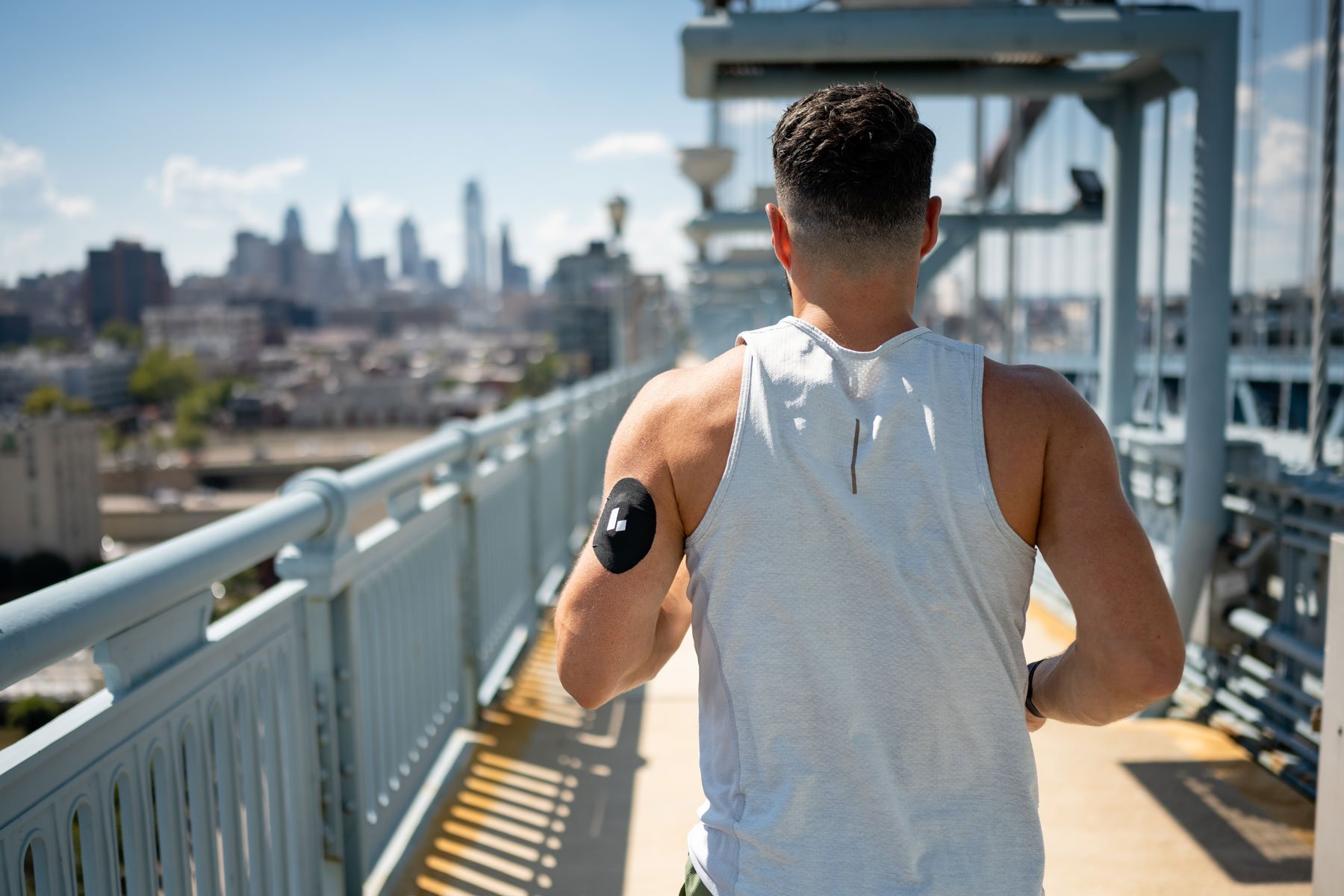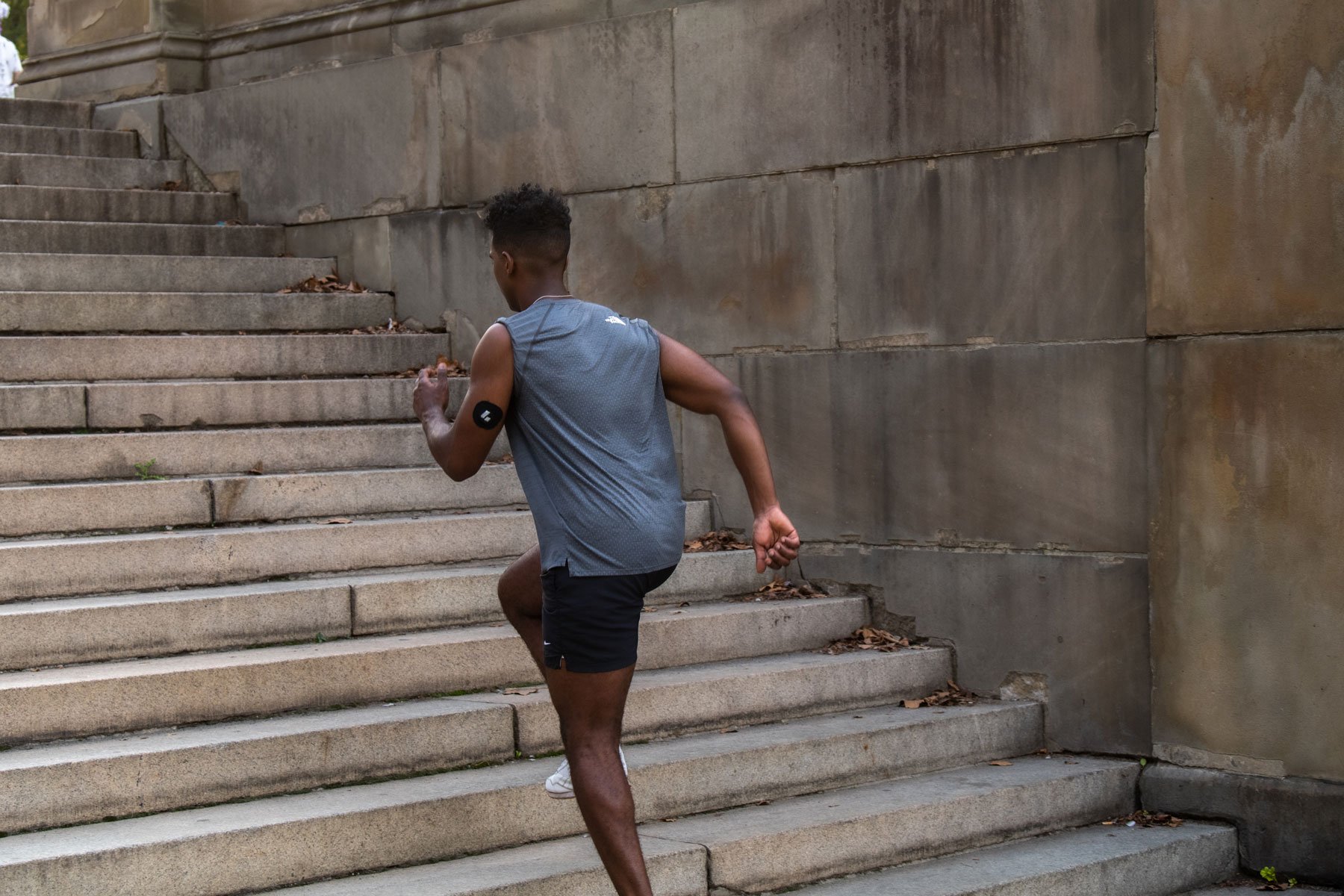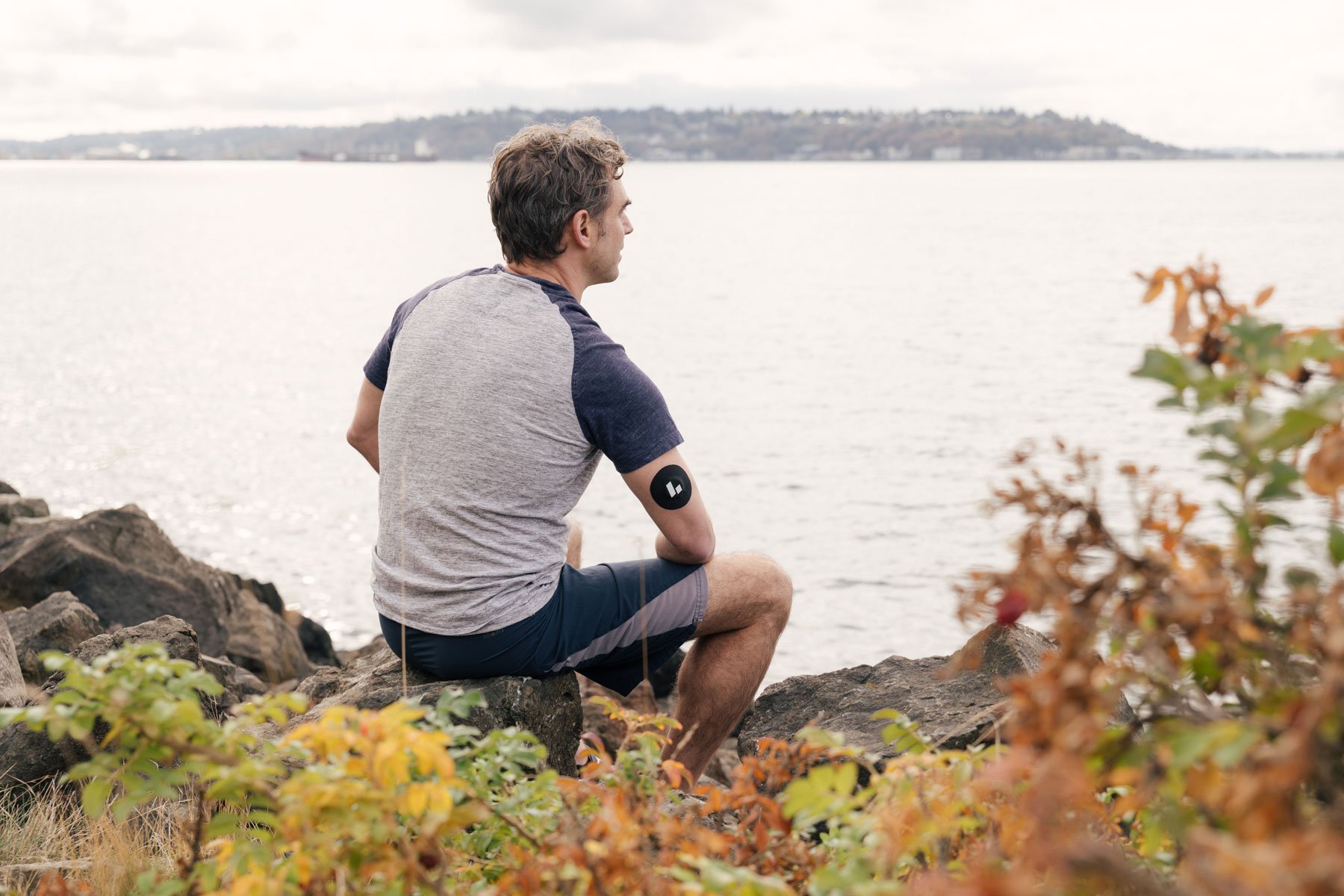Here’s what we know: Lifestyle changes can prevent prediabetes from becoming diabetes. If a continuous glucose monitor (CGM) helps you make those changes, then yes, it’s useful. But that “if” depends on a few things.
What is a continuous glucose monitor?
A CGM is about the size of two quarters stacked together. Like a high-tech Band-Aid, the device sticks to the back of the arm or the belly. A tiny sensor penetrates just under the skin to track glucose (sugar) in the fluid between and around your cells. That’s a good proxy for the glucose levels in your blood. A transmitter sends that data to your smartphone, where you can see your blood sugar level at any time, plus graphs that plot trends over hours or days.
CGMs were initially designed to help people with diabetes track blood sugar levels so they can keep them in a healthy range and dose their insulin appropriately. That’s crucial for managing symptoms and preventing complications.
However, a CGM can help anyone understand their body’s unique response to certain foods and other factors that impact blood glucose. That information may help steer you away from foods and behaviors that cause damaging blood sugar spikes while offering positive reinforcement for actions that promote stable glucose, which can help prevent you from developing prediabetes or diabetes.
CGM insights can help change your health trajectory
These positive changes are crucial. Most people with prediabetes—when blood sugar is higher than normal but not high enough to be diabetes (fasting blood sugar of 100 to 125 mg/dL, or an A1C between 5.7 and 6.4%)—are expected to develop Type 2 diabetes without intervention. But thanks to landmark research from the National Institutes of Health, we know that healthy choices can keep that from happening. In the study, people with prediabetes on a lifestyle-change program who lost 5 to 7 percent of their body weight (10 to 14 pounds for a 200-pound person) reduced the risk of developing Type 2 diabetes by 58 percent. The effect was even more significant for adults over 60 on the program—they cut their risk by 71 percent.
However, lifestyle changes only work if you actually stick to them. A 2018 study review concluded that CGMs can help people with Type 2 diabetes do just that, improving adherence to healthy eating and exercise.
That could apply to people with prediabetes as well, though so far, the research in this population has been limited. What little evidence we do have suggests that CGMs can be an effective lifestyle modification tool for people with prediabetes, particularly when combined with dietary coaching or education.
In a small 2020 study, 15 adults with prediabetes who wore CGMs for three weeks and reviewed the results with a diet coach lost a little weight and lowered their blood sugar. Crucially, the satisfaction rate among participants was high—93%—and many said the CGMs helped them visualize the impact of carbs on their bodies, motivating them to change their diet.
Another study presented at the Endocrine Society Annual Meeting last year found that CGMs can be an effective diabetes prevention tool when used along with diabetes education.
In the study, 57 people with prediabetes were randomized into two groups: One group used CGMs for three months, while the other didn’t use CGMs. Both groups attended an educational session on diabetes and how to adopt a healthier lifestyle. Participants completed diet and physical activity questionnaires at the beginning and then again at the end of the study. Their bloodwork was also tested at the beginning and end.
After six months, both groups reported improvements in their diets. While both groups did well, adding healthy foods and cutting out the junk, the CGM group reported a far greater increase in moderate activity levels and more vigorous activity than those in the education-only group. The CGM users also lost more weight and saw a greater drop in blood pressure.
Both groups showed a small but statistically significant improvement in their A1C scores (a measure of blood sugar over three months), though again, the CGM group did a little better. While both started with an average A1C level of 5.9, the CGM group ended up at 5.7, and the education-only group landed at 5.8. A third of the participants in both groups reversed their prediabetes by the end of the study.
When the researchers asked the CGM group to compare both interventions, 56 percent said that the CGM helped them more than the education had.
Bottom line: It appears that CGM can be an effective tool for lifestyle modification, but it’s also essential to educate yourself and seek expert guidance so you can understand what the data means and how to apply it. (More on that below.)
How can someone with prediabetes use a CGM to benefit health?
Before you try a CGM, know that you typically need a prescription from your doctor to obtain one, though a company like Levels can help facilitate a prescription through a telehealth provider. CGMs may not be covered by insurance for people without diabetes, but it’s worth checking with your provider. You can expect a price tag of about $200 a month if you have to pay out of pocket.
Once you have your CGM, use it for at least a month to gather baseline data. Use these tips to get the most out of that time:
1. Stick it and forget it. The nice thing about newer CGMs is the data continuously feeds to your phone via Bluetooth, where an app plots it on a graph so you can easily see trends. There’s no need for constant checking.
2. Keep track of four factors: diet, physical activity, stress, and sleep. All of these can impact blood sugar levels. Each CGM comes with a simple app to show you glucose data, but if you want to track and compare meals and automatically import sleep and exercise, it’s helpful to add an app like Levels to make more sense of the data and translate it to concrete actions. You could also record details in a journal or correlate smartwatch data with blood sugar readings to see how these factors impact your blood sugar levels and glycemic variability (fluctuations throughout the day). Seeing this helps you recognize and internalize the factors that affect blood sugar.
3. Look for big spikes. While it’s normal for blood sugar to vary throughout the day, you generally want glucose levels to stay under ~110–115 mg/dL at any time point after meals for optimal metabolic health. Repeated spikes much greater than that can lead to insulin resistance and metabolic dysfunction over time. (Occasional rises or spikes beyond this are not something to obsess about—metabolic health is about long-term trends.)
4. Notice blood sugar managing strategies, too. Did that walk you took to reduce your glucose rise? Does consuming protein before carbs affect your glucose after a meal? Seeing these shifts can be a powerful motivator.
5. Don’t panic if blood sugar is “low.” CGMs can also issue a “low” blood sugar alert, but low blood sugar (hypoglycemia) isn’t usually an issue for people who aren’t on blood-sugar-lowering medications. If you do happen to get one, take note of how you feel. Are you jittery, lightheaded, or sweaty? If so, this can usually be corrected with a healthy snack such as berries and nut butter. Also, look at what happened before the drop—often, it follows a blood sugar spike; eliminate the rise, and you can often eliminate the dip.
6. Pay attention to blood sugar levels first thing in the morning. This gives you a sense of your fasting blood sugar. (You may have taken a fasting blood glucose test to be diagnosed with prediabetes. Keep in mind, though, that a CGM isn’t meant to diagnose you.) If it’s above 100 mg/dL, consider how you slept, your stress level the day before, and what you ate before bed.
Conclusion
While some people choose to wear a CGM all the time, I often advise clients to wear one for a month to get a baseline (along with blood tests) and then use it again later when they want to check in on their progress or experiment with new lifestyle changes.
 Try a CGM to see your metabolic health
Try a CGM to see your metabolic health
The best way to understand your metabolic health is with a CGM and an app like Levels to monitor your data with personal insights. Levels members get access to the most advanced CGMs and personalized guidance to build healthy, sustainable habits. Click here to learn more about Levels.









